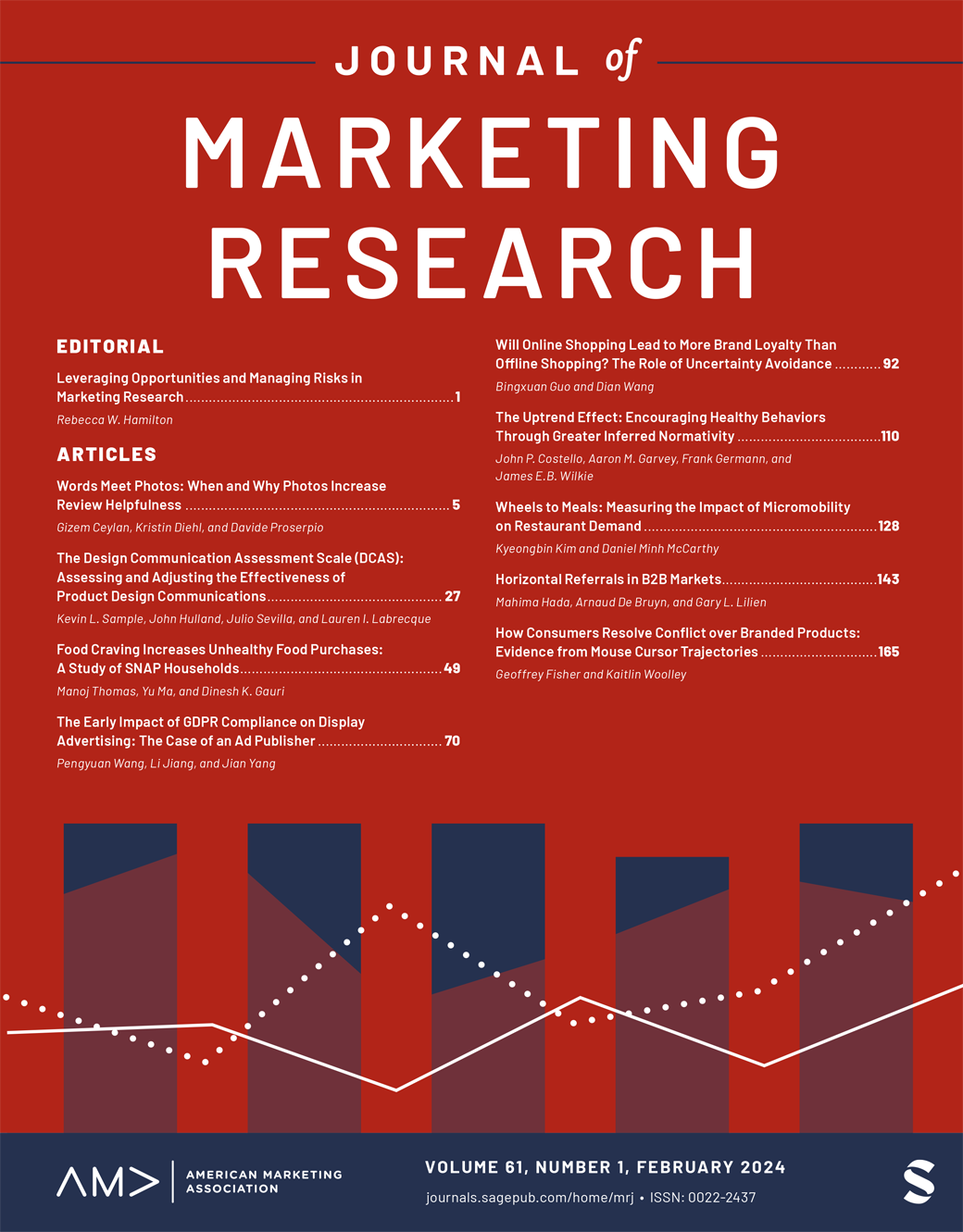Statistical Inference for the Factor Model Approach to Estimate Causal Effects in Quasi-Experimental Settings
IF 5
1区 管理学
Q1 BUSINESS
引用次数: 0
Abstract
Causal inference using quasi-experimental data is of great interest to marketers. The factor model approach to estimate treatment effects accommodates a large number of control units and can easily handle a large number of treatment units while flexibly allowing for cases where the treatment is outside the range of the control units. However, the factor model method lacks formal inference theory, instead relying on bootstrap or permutation procedures with strong assumptions. Specifically, the extant Xu (2017) bootstrap procedure requires that the treatment and control error variances are equal. In this research the authors establish that when this assumption is violated, the bootstrap procedure results in biased coverage intervals. The authors develop a formal inference theory for the factor model approach to estimate the average treatment effects on the treated. The approach enables formal quantification of uncertainty through hypothesis testing and confidence intervals. The inference method is applicable to both stationary and nonstationary data. More importantly, the inference theory accommodates treatment and control unit outcomes with different distributions, which includes different error variances as a special case. The authors show the performance of the inference theory with simulated data. Finally, they apply the method to empirically quantify the uncertainty in the effect of legalizing recreational marijuana on the beer market and the sales effect of a digitally native online brand opening a physical showroom.因子模型方法在准实验环境中估计因果效应的统计推断
利用准实验数据进行因果推理是营销人员非常感兴趣的。用于估计治疗效果的因子模型方法可容纳大量控制单元,并且可以轻松处理大量治疗单元,同时灵活地允许治疗超出控制单元范围的情况。然而,因子模型方法缺乏形式化的推理理论,而是依赖于具有强假设的自举或排列过程。具体而言,现有的Xu (2017) bootstrap程序要求处理和控制误差方差相等。在本研究中,作者证明当这个假设被违反时,自举过程会导致有偏的覆盖区间。作者为因子模型方法开发了一种形式推理理论,以估计对被治疗者的平均治疗效果。该方法可以通过假设检验和置信区间对不确定性进行正式量化。该推理方法对平稳数据和非平稳数据都适用。更重要的是,推理理论容纳了不同分布的治疗和控制单元结果,其中包括不同的误差方差作为特殊情况。用仿真数据验证了推理理论的有效性。最后,他们运用该方法实证量化了娱乐性大麻合法化对啤酒市场影响的不确定性,以及数字原生在线品牌开设实体展厅的销售效果。
本文章由计算机程序翻译,如有差异,请以英文原文为准。
求助全文
约1分钟内获得全文
求助全文
来源期刊

Journal of Marketing Research
BUSINESS-
CiteScore
10.30
自引率
6.60%
发文量
79
期刊介绍:
JMR is written for those academics and practitioners of marketing research who need to be in the forefront of the profession and in possession of the industry"s cutting-edge information. JMR publishes articles representing the entire spectrum of research in marketing. The editorial content is peer-reviewed by an expert panel of leading academics. Articles address the concepts, methods, and applications of marketing research that present new techniques for solving marketing problems; contribute to marketing knowledge based on the use of experimental, descriptive, or analytical techniques; and review and comment on the developments and concepts in related fields that have a bearing on the research industry and its practices.
 求助内容:
求助内容: 应助结果提醒方式:
应助结果提醒方式:


